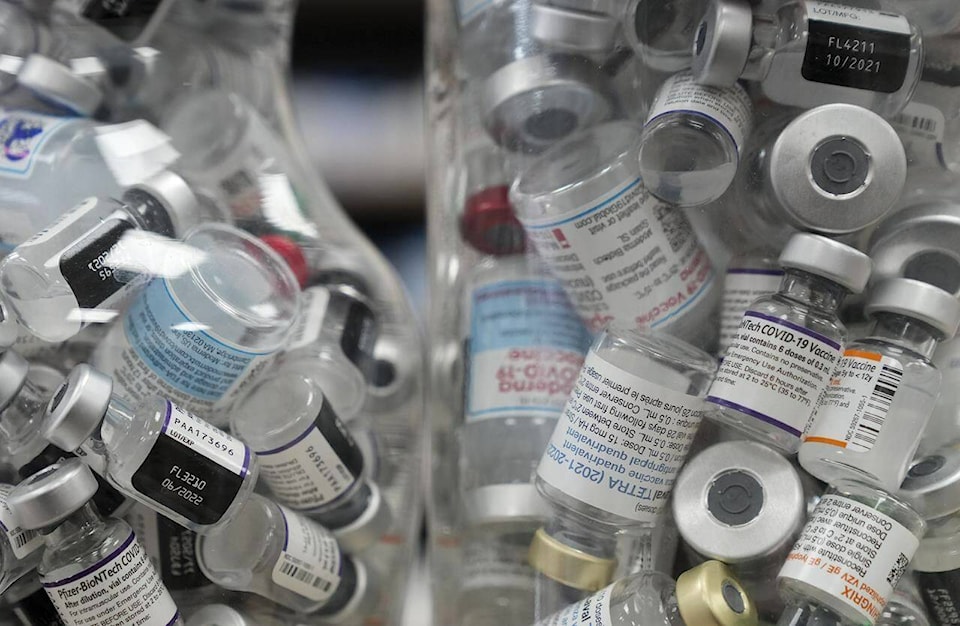A large study that chronicles the trajectory of COVID-19 over the first 2-1/2 years of the pandemic suggests most British Columbia children and adults younger than age 60 developed antibodies to slash their risk of severe illness — either through vaccination, infection or both.
Lead author Dr. Danuta Skowronski, an epidemiologist at the BC Centre for Disease Control, said the findings can be generalized to the rest of Canada due in part to a push to deliver first doses of vaccine and the “beast” of Omicron, which drove wave after wave of infections.
Antibodies to SARS-CoV-2, the virus that causes COVID-19, can be detected in the blood of people who have recovered from the disease and among those who have been vaccinated.
Researchers looked for antibodies in the leftover blood of a total of 14,000 people who had lab tests in British Columbia between March 2020, before the World Health Organization declared a pandemic, and August 2022, as the fast-spreading Omicron variant was evading vaccine protection.
They did eight analyses, amounting to snapshots of the virus’s presence in the population over the research period.
The study, published Monday in the Canadian Medical Association Journal, found that by January 2021, less than five per cent of people had been exposed to the virus.
But the proportion of those with COVID-19 antibodies rose to 56 per cent in June 2021 as vaccines were rolled out. It shot to 95 per cent in August of this year through a combination of vaccination and infection as Omicron became the dominant variant.
“The highest infection rates were in children and in parental-age adults. That likely reflects their greater interconnectedness, socially,” Skowronski said, adding that while data from other provinces is limited, similar findings have been reported in the United States.
The lowest infection rates were in the very old, as seen elsewhere in the world. She said that was possibly due to social isolation, and a high rate of vaccination and boosters among this age group, which is also at greatest risk of severe illness.
That points to the need for older adults to be prioritized for vaccination, Skowronski said.
The BC Centre for Disease Control launched similar seroprevalence surveys, which measure the attack rates of a particular illness in a population over time, during the 2009 swine flu pandemic caused by the H1N1 influenza virus.
It has completed several surveys during the COVID-19 pandemic, including one published in September that suggested at least 70 to 80 per cent of children and youth in Greater Vancouver and the Fraser Valley of B.C. had been infected. Another seroprevalence study is set to begin later this month to continue monitoring the virus’s tracks, Skowronski said.
The data can inform real-time policy decisions because without antibodies, a vast proportion of the population is susceptible to infection in a pandemic and that would crush the capacity of the health-care system, she said.
“As (the research) was unfolding, there were several points that I thought were really quite remarkable and in some ways a testament to the decisions that had been made in B.C., but not only in B.C., in Canada, because I think our findings are generalizable to other areas.”
Quick vaccine rollouts helped prevent further spread, she said.
“Canada went from being in a precarious position in January of 2021 in terms of vaccine supply to by June of 2021 being the world leader in vaccine coverage — outstripping the United Kingdom, even Israel, in terms of the proportion that had been vaccinated. And we show that in our seroprevalence survey, that swift uptake in vaccine coverage.”
Caroline Quach-Thanh, a professor in microbiology, infectious diseases and pediatrics at the University of Montreal, will co-lead a study surveying antibodies in children up to age 17 to detect the presence of past COVID-19 infection and/or vaccination.
The research team wants to obtain 36,000 samples of leftover blood from emergency departments in 14 children’s hospitals over five testing periods starting in January 2023.
The yearlong study will involve all provinces except Manitoba. New Brunswick and Newfoundland and Labrador will be excluded because they do not have children’s hospitals.
The hope is to gain more data on how COVID-19 has impacted youth across various provinces, and to be on the front lines of whatever the pandemic may bring next, Quach-Thanh said.
“The question is: Are we able to pick up something new that might be coming?”
—Camille Bains, The Canadian Press
RELATED: B.C. COVID response praised for ‘nimbleness,’ despite lack of public trust: review
RELATED: Federal government still strongly encourages people to use masks while travelling
